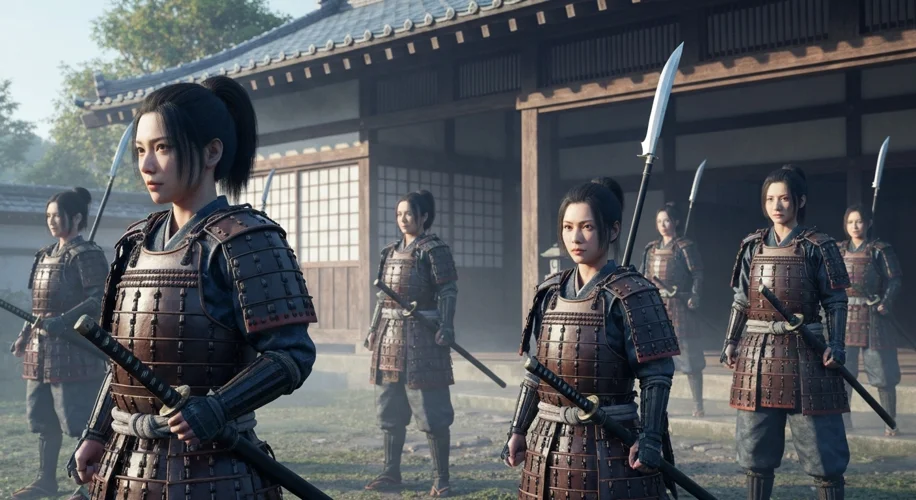In the grand tapestry of historical harems, the image of eunuchs guarding opulent chambers often comes to mind. From the Ottoman sultans to the Chinese emperors, these castrated attendants were a common feature, their unique status ensuring loyalty and preventing familial succession within the forbidden quarters. However, Japan, a land steeped in its own distinct cultural evolution, charted a different course.
Unlike many of its continental counterparts, Japan did not widely embrace the practice of employing eunuchs within its imperial or aristocratic households. This raises a fascinating question: if not eunuchs, then who bore the responsibility of guarding the privacy and security of these secluded spaces, often housing the most revered or vulnerable members of society?
The answer lies in the intricate social structures and deeply ingrained traditions that defined Japanese society for centuries. The primary guardians of Japanese harems, particularly within the imperial court and the residences of powerful feudal lords (daimyo), were not eunuchs, but rather a specialized class of female attendants and guards, often referred to as ‘onna-bugeisha’ or ‘onna-musha’ when armed and trained in martial arts.
These women were not mere concubines or passive residents of the inner sanctums. They were rigorously trained, highly disciplined individuals who played a crucial role in maintaining order, security, and the strict etiquette expected within these exclusive domains. Their loyalty was typically to the head of the household, and their position within the harem was one of authority and responsibility.
The most prominent examples can be found within the imperial court in Kyoto during periods like the Heian era (794-1185). The emperor’s wives, concubines, and their attendants resided in vast, sprawling palace complexes. Here, the ‘naishi’ (female palace servants) and other specialized female officials were tasked with managing the daily lives of the imperial household, including its security. They were privy to courtly intrigues and held considerable influence, acting as gatekeepers to the emperor’s inner circle.

Beyond the imperial court, the residences of the samurai class also featured these female guardians. Daimyo, powerful feudal lords, maintained large households that often included extensive private quarters for their families. In times of conflict, or even in the absence of their lord, the women of the household, particularly those trained in combat, would often take up arms to defend their homes. Figures like Tomoe Gozen, a legendary female warrior who fought alongside Minamoto no Yoshinaka in the Genpei War (1180-1185), exemplify the martial prowess that some of these women possessed.
These ‘onna-bugeisha’ were skilled in various martial arts, including the use of the ‘naginata’ (a pole weapon with a curved blade), the ‘tantō’ (a dagger), and archery. Their training was not merely for self-defense but also to serve as a protective force for their families and their lord’s estate. The concept of ‘oniyome’ (demon bride) or ‘tsundere’ (a person who is initially cold and aloof but later reveals a warm side) in Japanese folklore might, in part, reflect the formidable nature of women who were expected to be both nurturers and fierce defenders.
The absence of widespread eunuch use in Japan can be attributed to several factors. Firstly, Japanese society, while hierarchical, did not develop the same centralized, absolute imperial power structure that characterized many Chinese dynasties, where eunuchs often gained immense political power due to their lack of familial ties. Secondly, the Shinto and Buddhist traditions, which permeated Japanese culture, did not typically incorporate practices that involved widespread castration for service.
Instead, the emphasis was often on loyalty derived from social bonds, duty, and a strong sense of honor. The female guardians, often drawn from the ranks of the samurai class or trained from a young age within the household, were integrated into the very fabric of the family and its protective system. Their role was not one of alienating separation, as with eunuchs, but of intrinsic participation in the household’s security and management.
While the image of the all-male samurai warrior often dominates historical narratives, the presence and crucial role of these female guardians highlight a more nuanced and complex reality of Japanese social history. They were the silent sentinels, the trained defenders, and the keepers of the inner sanctums, ensuring the privacy and safety of Japan’s most esteemed residents, all without the need for the eunuch’s unique, and often tragic, sacrifice.
Their legacy is woven into the stories of samurai families, imperial courts, and the very notion of protection and duty within Japanese tradition. These women, though often operating in the shadows of more prominent male figures, were indispensable guardians, embodying a different, yet equally potent, form of devotion and strength.

